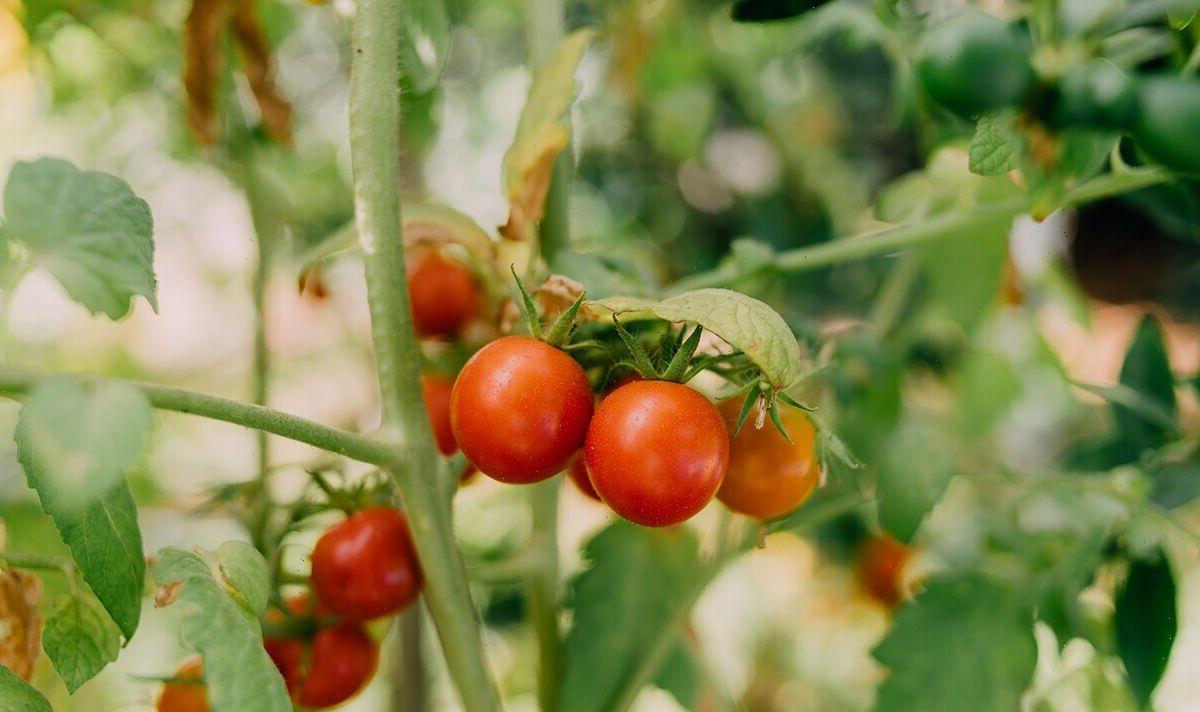Gardening: Homebase shares tips to help grow tomatoes
We use your sign-up to provide content in ways you’ve consented to and to improve our understanding of you. This may include adverts from us and 3rd parties based on our understanding. You can unsubscribe at any time. More info
If you’ve been grocery shopping recently, you may have noticed the shelves in the produce aisle are relatively empty due to a shortage of produce currently sweeping across the UK. With shoppers unable to buy their favourite fruit and veggies – including tomatoes and peppers – some may be thinking about growing their own instead.
Growing tomatoes is a rewarding activity that is relatively easy to achieve either in a garden, on a balcony or on a windowsill.
With this in mind, gardening expert at The Greenhouse People, Matt Jordan, has shared how you can grow your own “healthy and delicious” tomatoes at home.
Choose the right variety
Before you embark on your tomato-growing journey, have a think about which tomato variety you want to grow.
There are more than 10,000 varieties of tomatoes to choose from so it’s important you select one that is suitable for where you’re planning to grow them.
One of the most popular varieties is called ‘Gardener’s Delight’. The variety is reliable with bite-sized cherry tomato fruits.
Alternatively, grafted tomato plant varieties might be more suitable for those looking for an abundant crop that won’t be affected by soil-borne diseases.
READ MORE: ‘Holy grail’ product to ‘restore’ white bedding for 29p

Prepare the soil
Once you’ve selected the right tomato variety, you’ll want to prepare your soil ahead of planting.
Tomatoes like well-draining soil. Choose mix organic matter compost, aged manure, or other organic material into the soil to improve its fertility and drainage.
Start from seed
Matt said: “The cheapest and most efficient way to grow tomatoes is growing from seed. Right now – from late February to early April – is the prime time to begin sowing tomato seeds.
“Tomato seeds need warmth to germinate (around 21C) and take on average between seven to 14 days to germinate.
“So, either leave them on a warm windowsill indoors or make the most of a greenhouse. Once germinated, the tomato seedlings can be transplanted into pots.
“Plant seedlings or transplants about two feet apart. Harvest times will depend on the variety of tomato plants and their level of care.”
DON’T MISS
65p effective deterrent to stop rats invading gardens – ‘they hate’ it [INSIGHT]
‘Biggest mistake’ to avoid when planting tomatoes – ‘largest killer’ [UPDATE]
Manhattan apartment has cheap rent – but it comes with a catch [ANALYSIS]
Provide support
As your tomato plant grows, the fruit will become heavier which is a sign your plant is producing a healthy harvest.
However, the increased load can weigh down the stems, putting the fruits dangerously close to the ground. This can attract pests, slugs and other diseases.
Damaged stems will also cause the plant to divert any energy into healing, leaving you with smaller tomatoes come harvest.
Stakes, cages, and trellises can all be used to keep the plant upright and support the heavy fruit. Supporting tomato plants early will ensure they are protected when they are most vulnerable to damage.
Looking for a new home, or just fancy a look? Add your postcode below or visit InYourArea
Watering
In the spring and summer months, tomatoes need to be watered consistently – around one inch each week.
They will need even more water if they’re grown in a container.
However, gardeners should be aware that over-watering tomatoes can lead to root rot. Meanwhile, irregular watering can damage the fruit and affect its taste.
Keep the soil moist but don’t waterlog it. Water from the base of the plant being careful to avoid the leaves.

Fertilising
Fertilising tomatoes boosts the plant’s growth and ensures there is a high yield when it comes to harvest.
Tomatoes will benefit from regular fertilising since they need a lot of nutrition to produce healthy fruit. However, too much nitrogen can result in a plant with lots of foliage but a small harvest.
Matt added: “Use a fertiliser specifically formulated for tomatoes and feed once a fortnight once the first flowers begin to show, increasing water and feed as the tomato fruit increase in size.
“If you’re unsure, make sure to follow the fertiliser package instructions for the best results.”
Source: Read Full Article
